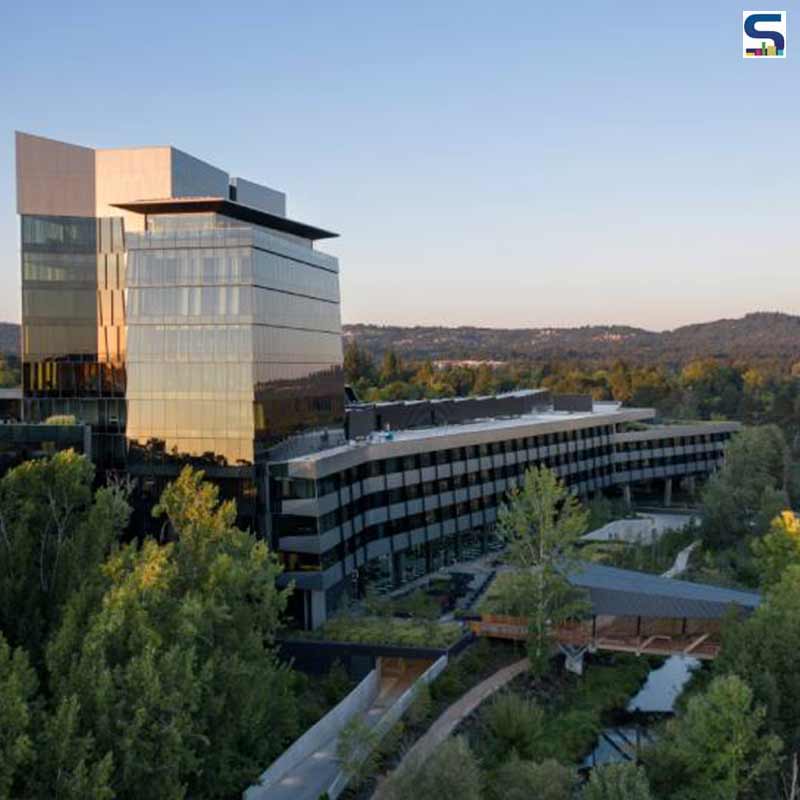
The Serena Williams Building—a workplace for 2,750 occupants at more than 1 million square feet—is the largest structure at Nike World Headquarters designed by Portland-based Skylab Architecture. The project nicely captures the spirit of American famous tennis player Serena Williams, the ethos of sport, and Nike’s heritage. Located in Beaverton, Oregon, the LEED Platinum–certified Serena Williams Building signifies Nike’s biggest investment in design and creativity. The firm has shared detailed information about the project with SURFACES REPORTER (SR). Take a look:
Also Read: Charming Aluminium Meshwork Travels Through The Ceiling of Soch Office in Mumbai | Saniya Kantawala Design
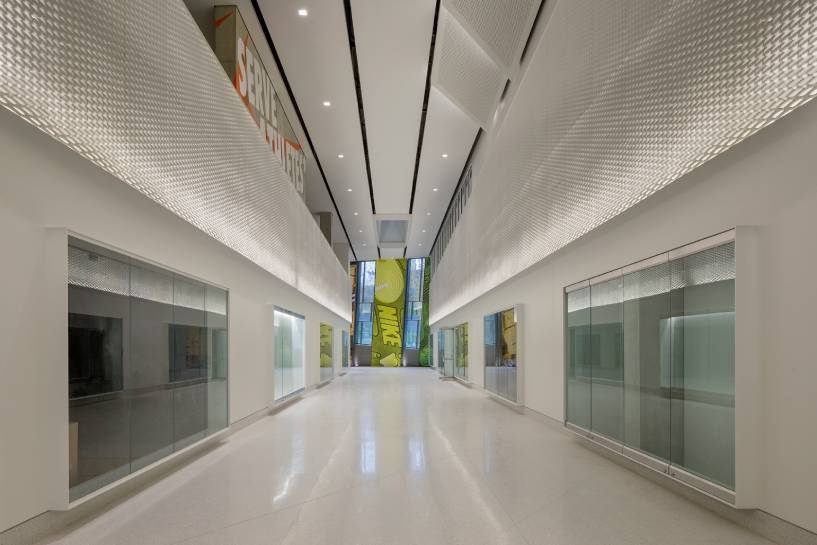
Serena Williams Building consists of four parts: an underground parking garage and loading dock; a merchandising center for prototype retail spaces; integrated design studios for multiple product categories; and a 12-story tower with shared amenities for all of campus.
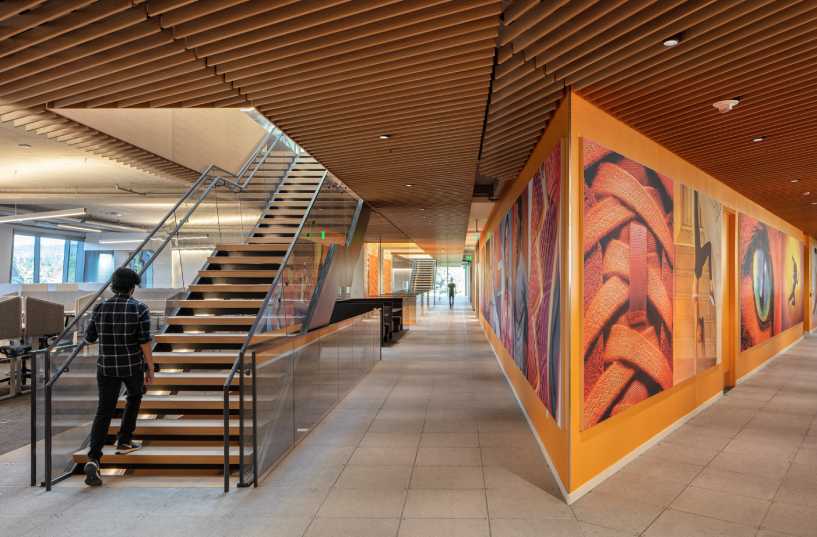
Fluid Design Strategy
Integral to the design is the concept of flow -- a fluid state design strategy that is both efficient and enlightened. Flow facilitates unexpected connections and possibilities, both among designers and between disparate parts of the business.
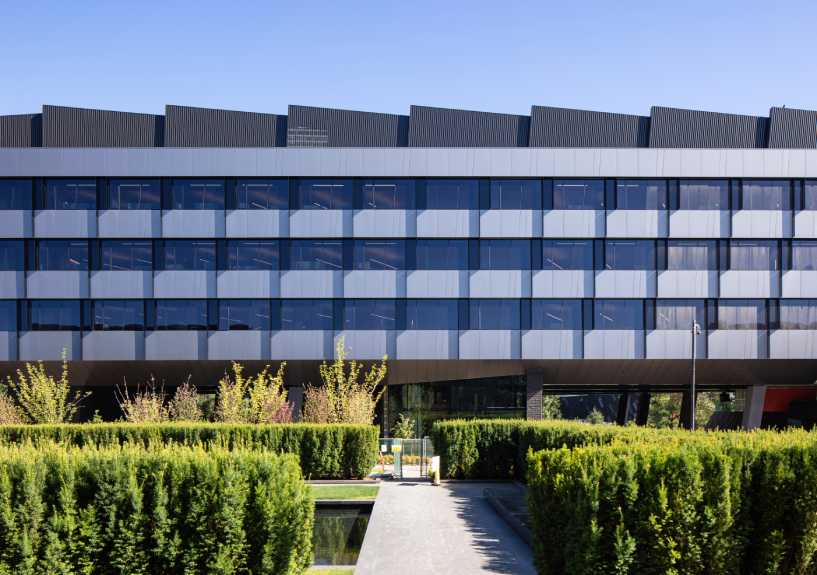
The firm created a variety of scales of gathering spaces to foster identity and connectivity, both indoor and outdoor. The building is organized around a principle that all designers for each brand within the business occupy a single level, while the services stack vertically between levels.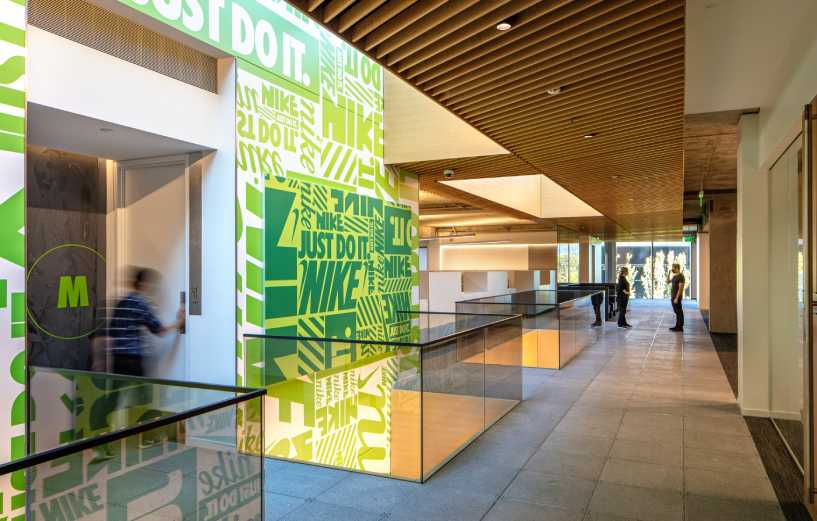 In a first for Nike, products can move from sketch to prototype to final design to retail fixture all under one roof.
In a first for Nike, products can move from sketch to prototype to final design to retail fixture all under one roof.
Giving Back To Nature
In its former life, the building site contained a parking lot and an access road to an adjacent building, all next to a beautiful wetland that the campus had turned away from. For the firm, regenerative design involves working with nature as an active partner towards both respectful site design and intelligent construction with responsible systems and materials.
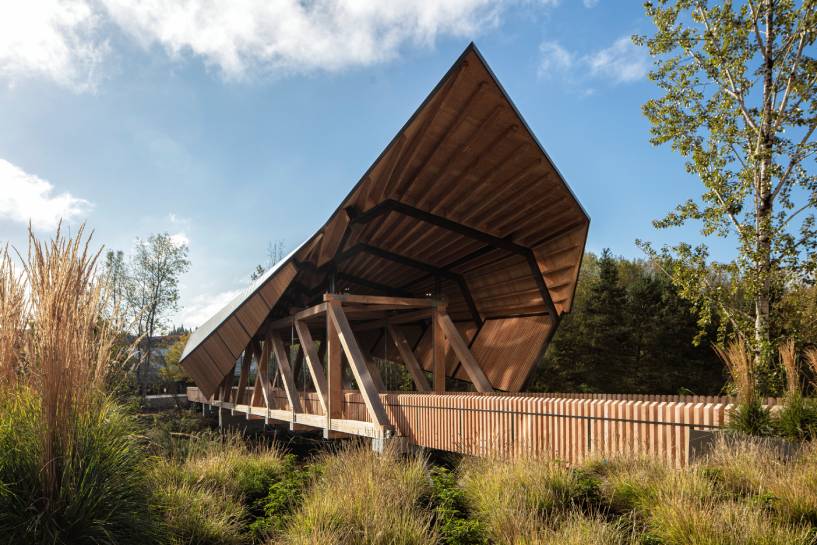 To better connect to the natural landscape, they buried the existing access road along with all parking and loading to minimize the visual presence of cars and trucks. In terms of massing, each of the building’s distinct bars, or wings, cascade to the south and feature inhabitable, interlacing green roof terraces that overlook the wetland.
To better connect to the natural landscape, they buried the existing access road along with all parking and loading to minimize the visual presence of cars and trucks. In terms of massing, each of the building’s distinct bars, or wings, cascade to the south and feature inhabitable, interlacing green roof terraces that overlook the wetland.
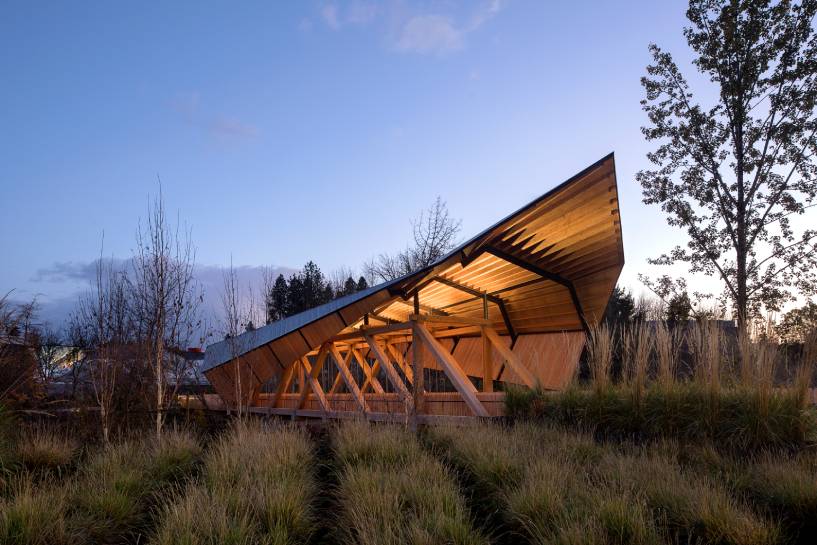 A 260 kW photovoltaic array screens rooftop mechanical units from view. Stormwater is collected and returned to the wetland. Energy efficient mechanical systems, including displacement ventilation and radiant sails have been used in the project.
A 260 kW photovoltaic array screens rooftop mechanical units from view. Stormwater is collected and returned to the wetland. Energy efficient mechanical systems, including displacement ventilation and radiant sails have been used in the project.
Also Read: ETH Zurich Combines 3D Printing And Casting to Create Energy-Efficient Concrete Slab Ceiling in This Office | Switzerland
Ample of Natural Light
The negative spaces created by the branching bars are treated with the same sensitivity as the interior spaces themselves.
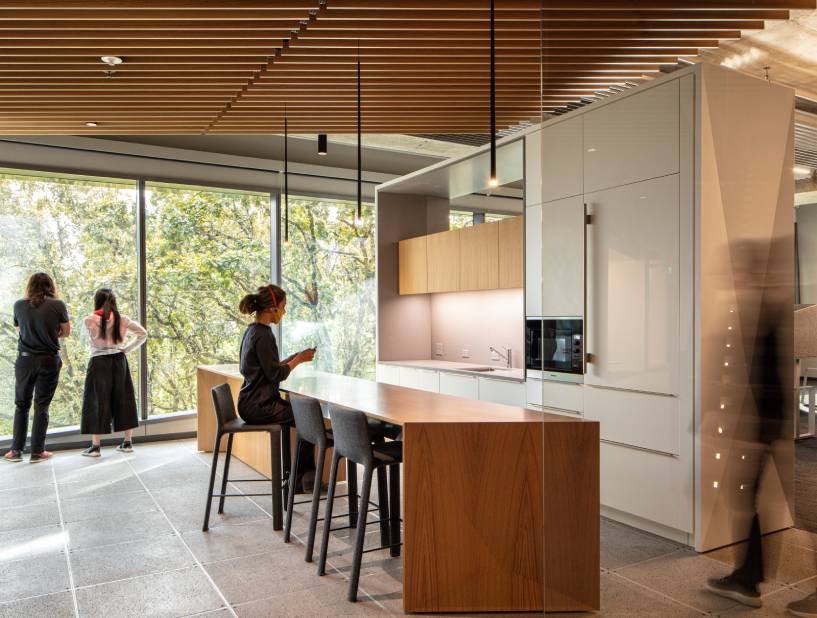
Courtyards, gardens, plazas and a sunken tennis court break down the scale of the building and provide informal outdoor spaces for work, recreation and relaxation. Natural light floods the workspaces along each bar from glazing on two sides and skylights above communicating stairs.
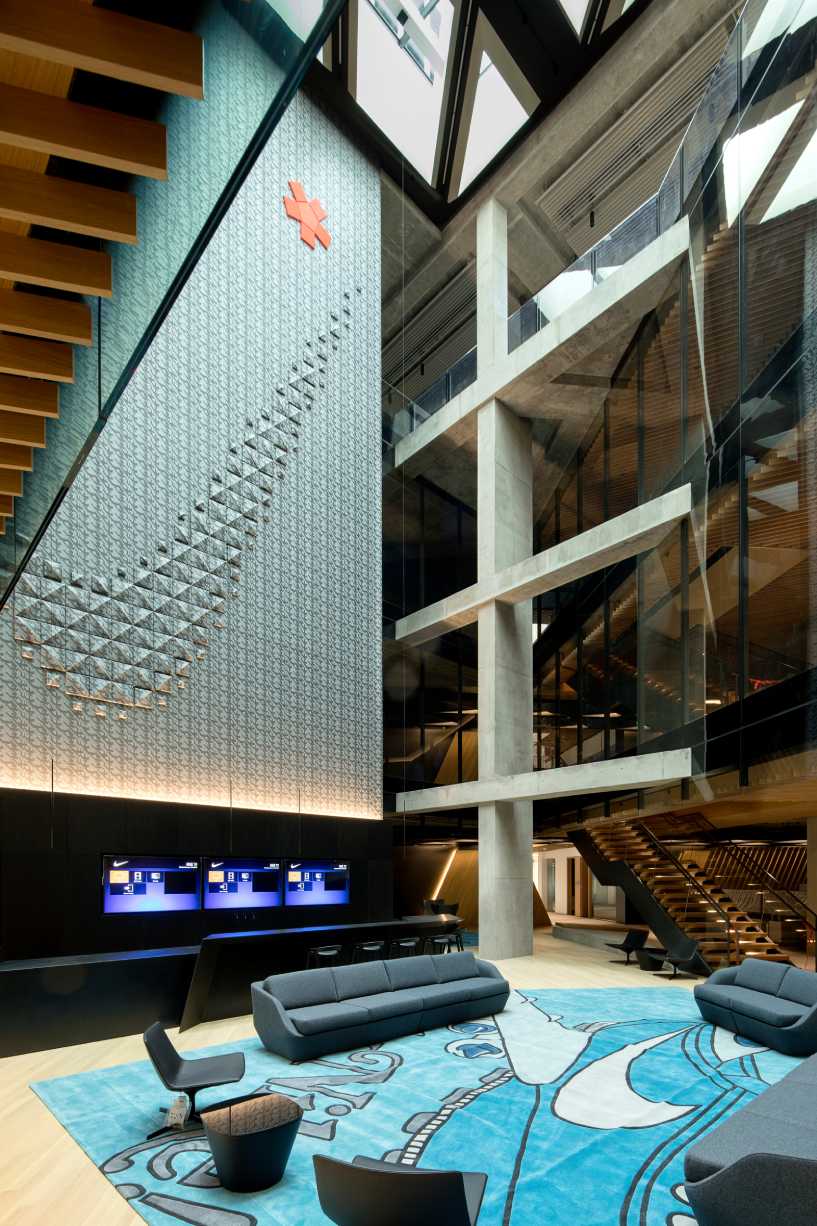 Exposed Concrete in the Interiors
Exposed Concrete in the Interiors
Exposed concrete on the interior of the building offers a raw, open palette in the design studios and expresses the building’s structure in key moments.
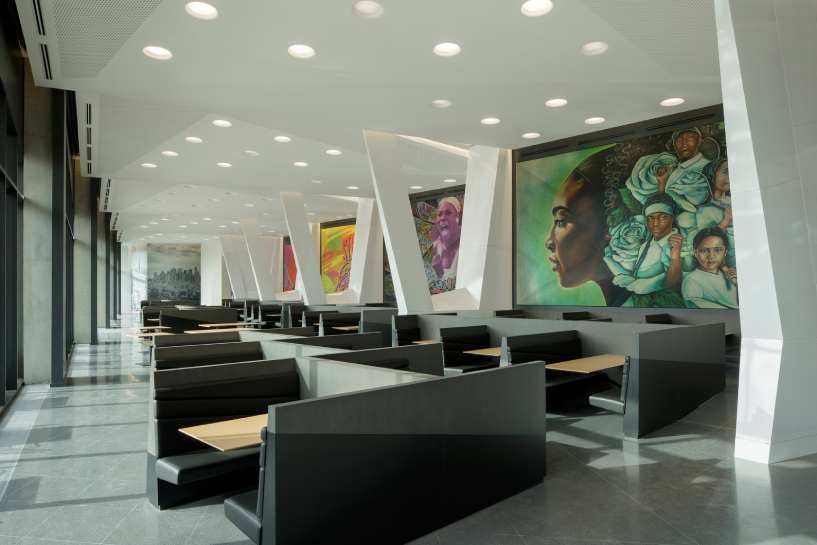 Project Details
Project Details
Architecture and Interior Design: Skylab Architecture
Skylab Architecture team: Jeff Kovel, Design Director; Brent Grubb, Project Manager; Susan Barnes, Project Director; Robin Wilcox, Project Director; Nita Posada, Interior Architecture Lead; and Louise Foster, Project Designer
Other Credits
Building Enclosure: Facade Group
Civil Engineering: WHPacific
Code Consultant: Code Unlimited
Contractor: Hoffman Construction
Kitchen Consultant: HDA
Landscape: Place Landscape
Lighting: Luma
Mechanical/Electrical/Plumbing: PAE
Signage/Wayfinding: Ambrosini Design
Sound: Listen to Acoustics
Specifications Consultant: M.Thrailkill
Structural Engineering: Thornton Tomasetti
Sustainability Consultant: Brightworks
Photo Courtesy: Jeremy Bittermann, Stephen Miller J.P. Paull, PLACE
Keep reading SURFACES REPORTER for more such articles and stories.
Join us in SOCIAL MEDIA to stay updated
SR FACEBOOK | SR LINKEDIN | SR INSTAGRAM | SR YOUTUBE
Further, Subscribe to our magazine | Sign Up for the FREE Surfaces Reporter Magazine Newsletter
Also, check out Surfaces Reporter’s encouraging, exciting and educational WEBINARS here.
You may also like to read about:
Space Theory Gives Rustic Touch To This Contemporary Office in Ahmedabad | Kraftier Studio
MPDS New Office In Vadodara Features Unique Brick Patterned Facade Adorned With Polychromatic Shades and Artistic Interiors
And more…